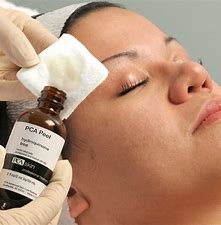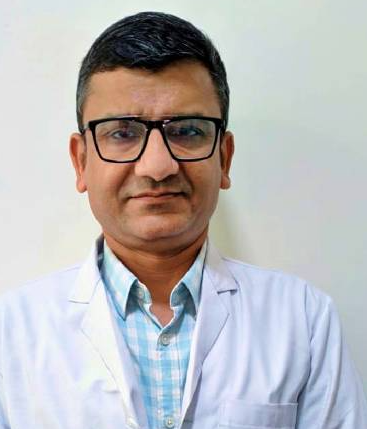Chemical Peel: Treat Wrinkles and Acne Scars

Treatment Duration
45 Minutes
------ To ------60 Minutes
Treatment Cost
₹ 8,000
------ To ------₹ 15,000

You can check Chemical Peel Cost here.
What are Peels for Skin Resurfacing?
Chemical peels are used to rejuvenate ageing skin and restore a more youthful appearance to the face. In chemical peeling, the surgeon applies a chemical solution to your skin, which acts on the outer layer of the skin. This skin layer eventually peels off, revealing a more youthful appearance. As a result of the resurfacing, the skin becomes smoother, wrinkle-free, more even in colour, and brighter overall.
Expert Doctors (10)
NABH Accredited Hospitals (10)


What are the Benefits of Chemicals Peels?
- Eliminates fine lines and wrinkles around eyes and mouth
- Help in minimizing the pores
- Treat acne
- Smoothens the skin by removing scars and discolouration
- Reduces signs of ageing like spots, freckles and melasma caused due to pregnancy
Who needs Chemical
Several lifestyle circumstances can contribute to the development of skin diseases. In addition, some underlying health conditions may also cause skin problems. Causes of common skin conditions:
- The bacteria are trapped inside your pores or hair follicles.
- Skin conditions that affect your thyroid, kidneys, or immune system.
- Genetics
- Frequent contact with environmental triggers, such as allergens or contact with another person's skin
- Medicines, such as those that treat inflammatory bowel disease (IBD)
- Fungus or parasites habitating on the skin
- Exposure to the sun
Peels for skin resurfacing are used to enhance the texture and tone of the skin and treat certain skin conditions. Your surgeon may recommend peels for skin resurfacing if they observe one or more of the following indications together:
- To treat problems such as enlarged pores and rhytids (fine lines and minor creases on the face)
- To treat precancerous lesions (a collection of cells from our organs that may look similar to cancer cells but may not have their characteristics).
- Inflammatory disorders such as:
- Acne vulgaris
- Pseudofolliculitis barbae (razor bumps)
- Rosacea (blushing or flushing and visible blood vessels in your face)
- Post-acne scarring
- Pigmentary disorders such as:
- Melasma (dark, discoloured patches on your skin)
- Ephelides (freckles)
- Lentigines (lesions that are present in the sun-exposed regions of the body)
- Post-inflammatory pigmentation.
How is Chemical Peels done?
Skin resurfacing using chemical peels is performed in the following manner:
- You'll have your face thoroughly cleansed with an agent that removes excess oil, while your hair and eyes will be protected.
- Your hair will be covered with a cap to keep them away from the treatment field.
- The surgeon will apply petroleum jelly to areas of potential pooling of the chemical, such as your nose. Your eyes will be covered with an appropriate shield.
- The surgeon will first apply the peeling agent on the thicker skin regions (chin, nose, cheeks, and forehead), followed by the thinner skin regions (i.e., around the eyes and mouth).
- The surgeon may use a brush, gauze, or a wooden spatula to apply the chemical in evenly distributed strokes.
- The chemical solutions typically used include trichloroacetic acid, lactic acid, salicylic acid, glycolic acid, or carbolic acid (phenol).
- The surgeon may use different types of chemicals to cause controlled injury, each penetrating a different layer of skin and then peeling it away to reveal a fresh layer of skin.
- After the peel application, cool saline compresses can be used to neutralise the solution (glycolic acid) and/or provide comfort to the patient
What to Ask and Tell Your Doctors?
Questions to ask your surgeons:
Is a chemical peel suitable for all skin types?
In general, superficial peels can be used on all skin types. The risk of darkening your skin after treatment is higher for people with darker skin tones.
Additionally, chemical peeling may not be recommended if you:
- Have a history of abnormal skin scarring.
- Have skin conditions or take medicines that make your skin more sensitive.
- Have extra colouring on your scars.
- Can't avoid the sun for the healing period after the surgery.
Additionally, tell your surgeons about:
Tell your dermatologist if you have had keloids (an overgrowth of scar tissue at the site of a skin injury), any uncommon scarring tendencies, any X-rays of your face, or a history of cold sores before you undergo a chemical peel.
What to Expect Before Surgery?
You can expect the following:
Pre anaesthetic check-up:
- Medical history: The hospital will need you to provide a complete medical history and physical examination. If you are prescribed an oral antibiotic or an oral antiviral, begin taking it at least 24 hours before your chemical peel.
- Type of anaesthesia advised and decided based on surgery: You will be given general anaesthesia at the time of the surgery.
- You will be advised to not to smoke before surgery as it may delay the healing.
- The whole procedure takes 30 minutes to complete.
What to Expect on the day of Surgery?
You can expect the following:
Before considering this procedure, the hospital will obtain informed consent from you.
- Your surgeon will discuss the post-peel expectations with you.
- The hospital will need you to provide a complete medical history and physical examination.
- The surgeon may opt to perform pre-peel spot testing to select the proper peel for you.
- Three to four weeks before the procedure, the procedure of priming is started by the surgeon. It includes the application of a topical agent to thin the layers of the skin for easy penetration.
- If your surgeon chooses to perform chemical peeling using phenol, they will recommend liver and kidney function tests to reduce the possibility of toxicity due to this chemical.
- Your surgeon may give you hydroquinone (a chemical compound) cream to decrease the hyperpigmentation pre and post-procedure.
- Do not wax or traumatise the area of treatment.
- Do not tan or expose yourself to direct sunlight for two weeks before each treatment.
- One to two weeks before treatment, don't use any retinoids (compounds derived from vitamin A, such as tretinoin) unless your physician tells you otherwise.
- If you are prescribed an oral antibiotic or an oral antiviral, begin taking it at least 24 hours before your chemical peel.
- You should keep the peel areas free of any open sores, lesions, or skin infections.
- On the day of the treatment, you should cleanse your skin and not apply any skincare or makeup products.
What is the Recovery and Post Op. Care after Chemical Peels?
The Recovery process in Hospital:
- You will be monitored closely during the initial postoperative period, either by a wound care nurse and/or a surgeon.
- The healthcare team will help you in healing after the treatment. Vinegar soaks (acetic acid) may be applied to the area to facilitate healing three to five times a day.
- They will also apply petroleum jelly many times a day until the treated area has finished peeling (five to 10 days).
- Hours after the surgery, you may shower and use a non-detergent face wash. You can take a suggestion from your surgeon about this.
- Until the skin has healed completely, you should not use makeup/concealer.
- Ask your surgeons about the use of sunscreen after the procedure.
- You should not expose your treated skin to sunlight for the first few days after the procedure.
Recovery process/expectation after hospital discharge:
- You should arrange for a friend or a relative to drive you home after the surgery.
- Some temporary flaking, scaling, redness, and drying may occur after the procedure. Once the skin adjusts to the treatment, these conditions will disappear.
- If the tape is used to cover your face, it will be removed after a day or two.
- You can resume normal activities in about a week or ten days when your fresh skin appears.
- After two weeks, you may return to work.
- Consult your surgeon and use a sunblock with adequate ultraviolet A (UVA) and ultraviolet B (UVB) protection every day.
Depending on how deep your chemical peel is, you can expect varying results.
If you've had a light chemical peel:
- After your peel, you'll experience a sunburn-like reaction, which means you'll see redness and scaling.
- To soothe your skin, apply lotion or cream as instructed. After your skin heals, apply sunscreen daily.
- You may wear makeup immediately after treatment or the following day.
If you've had a medium chemical peel:
- You can expect some redness, swelling, stinging, and flaking of your skin. You may experience swelling for 48 hours or more. Blistering may occur and will break open. In seven to 14 days, the skin will peel off.
- Follow your surgeon's instructions for daily soaks. After each soak, apply ointment. Use lotion or cream daily. Don't expose your skin to the sun until it is completely healed.
- You will need to take antiviral medicines for 10 to 14 days.
- Within five to seven days, you can wear makeup again.
If you've had a deep chemical peel:
- A bandage will be applied to the treated area. Within a few days, the bandage will be removed. You can expect a healing period of 14 to 21 days.
- Follow your surgeon's instructions for daily soaks. After each soak, apply ointment. Apply moisturiser after 14 days. Avoid sun exposure for a minimum of three to six months.
- You will need to take antiviral medicines for 10 to 14 days.
- Do not wear makeup for at least 14 days.
First Follow up Appointment:
You should remember the following:
- On the next day of the surgery, the surgeon will want to see you. In addition, your hospital will arrange several follow-up visits during the first week.
- The bandage applied to your head might be removed at this appointment.
What are Risks and Complications After Chemical Peels?
Visit your surgeon if you observe the following symptoms:
- Itching of the skin
- Swelling or burning of the treatment area.
Complications that may be experienced after the surgery:
Immediate complications:
- Skin oedema (swelling that occurs when excess fluid is trapped in the tissues of the body)
- Burning and itching sensations on the face
- Blistering of the skin
Delayed complications:
- Bacterial, viral, or fungal infections.
- Scarring of the skin
- You can develop acne.
Last Updated on: 13 October 2025
Author
HexaHealth Care Team
HexaHealth Care Team brings you medical content covering many important conditions, procedures falling under different medical specialities. The content published is thoroughly reviewed by our panel of qualified doctors for its accuracy and relevance.
Other Treatments in Your City






















